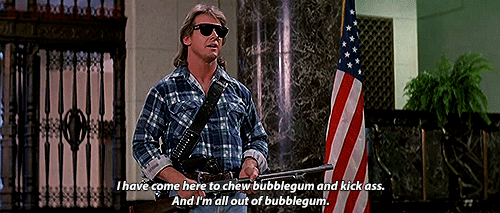How far would you go to chase a dream? Would that chase still be worthwhile even iv you never reached your final goal? These are the questions that lie at the heart of the 2003 animated masterpiece Millennium Actress. At once a portrayal of one woman's impossible dream and a universal homage to creative pursuit. Millennium Actress is truly a story for the ages.
 |
| Running up that road, running up that hill... |
Satoshi Kon's signature surreal style is utilized to dazzling effect in this allegory of creative pursuit. On the surface, the film follows a deceptively simple tale of one woman's efforts to find the man she loves. As Chiyoko's adventure unfolds, however, it becomes clear that the film's subject is actually a different, more complex, journey. She begins her story by recalling how she was discovered by a local film studio. Although she is excited at the opportunity her mother forbids her from accepting the studio's offer. After her chance meeting with the mysterious dissident painter, however, she is determined to pursue an acting career in an effort to one day reunite with him. Over the course of her career it is her desire to find him and return his key to "the most important thing" that drives her to keep moving forward. In this way the painter and his key serve as apt metaphors for inspiration and artistic fulfillment. When viewed in this context the film takes on a deeper, bittersweet, meaning as Chiyoko follows her inspiration through cinematic history with her dream of artistic fulfillment always just out of reach. In this way, the film aptly captures the trials and triumphs of creative pursuit in which an artist is forever chasing the next part, story, or project with fulfillment always promised around the next corner. In the film's divisive finale she reveals that it is the pursuit of the painter rather than the man himself that she truly loves. This poignant parting line perfectly captures the bittersweet nature of the artist's journey as she comes to terms with the impossibility of her destination while looking ahead to the next step of her journey. In this way, the film serves as more than just a meditation upon creative pursuit and instead offers a universal reminder that "It's not the destination, its the journey". In the midst of its philosophical musings the film also serves as a loving homage to Japanese cinema as it follows Chiyoko's career through parts that clearly recall everything from war-time melodramas to Kurasawa's samurai films, to the Godzilla franchise. As a result, the film works equally well as Kon's personal tribute to his own inspiration and a universal ode to creative pursuit. Join Chiyoko for the journey of a lifetime in Millennium Actress.
The film serves a feast for the eyes and heart through its breathtaking animation and engaging performances. Koichi Yamadera fuses somber realism with romantic idealism to alluring effect as the nameless painter. Shoko Tsuda perfectly captures the outward haughtiness and inner vulnerability of Chiyoko's rival, screen siren Eiko. Masaya Onosaka offers plenty of dry humor as cynical camerman Kyoji. Shozo lizuka is utterly endearing as Chiyoko's most devoted fan and former colleague, Ghenya. Miyoko Shoji, Mami Koyama, and Fumiko Orikasa take viewers on an unforgettable journey as they bring each of Chiyoko's ages to vibrant life. The animation showcases Kon's signature style while paying apt tribute to Japanese cinema. The character designs keep the often surreal story grounded by depicting the characters as looking like real people rather than the idealized faces and figures so often seen in modern anime. Even as the character designs remind us that we're in the real world, the film's ability to seamlessly transition between settings and styles lend the story an otherworldly sensibility. The animation's blending of various cinematic styles transports viewers into each of Chiyoko's films and the era in cinematic history that they represent. Experience the magic of the movies with Chiyoko in Millennium Actress.
Millennium Actress is a must-watch for cinephiles, artists, and anyone who has ever chased a dream. The film's dizzying animation and entrancing vocal performances take viewers on a journey through cinematic history and into the depths of the human heart. The script offers a poignant tale of personal and artistic passion that resonates across the ages. Fall in love with Chiyoko, the movies, and above all the journey in Millennium Actress.





